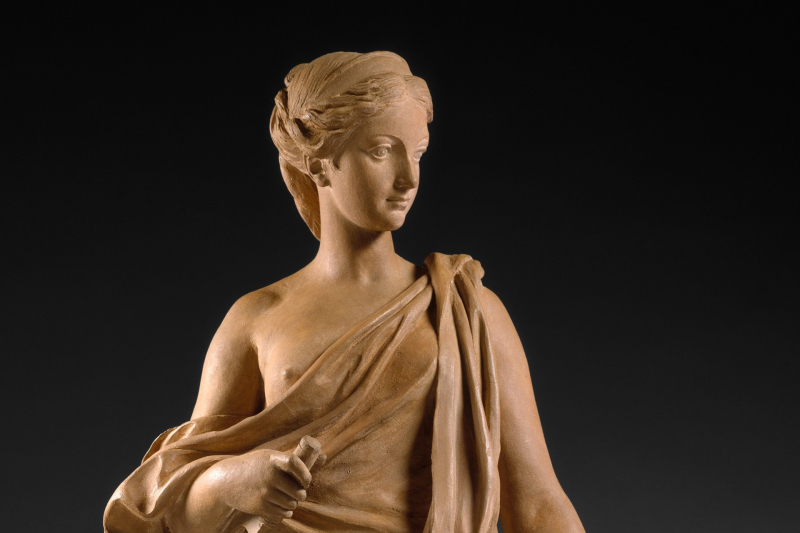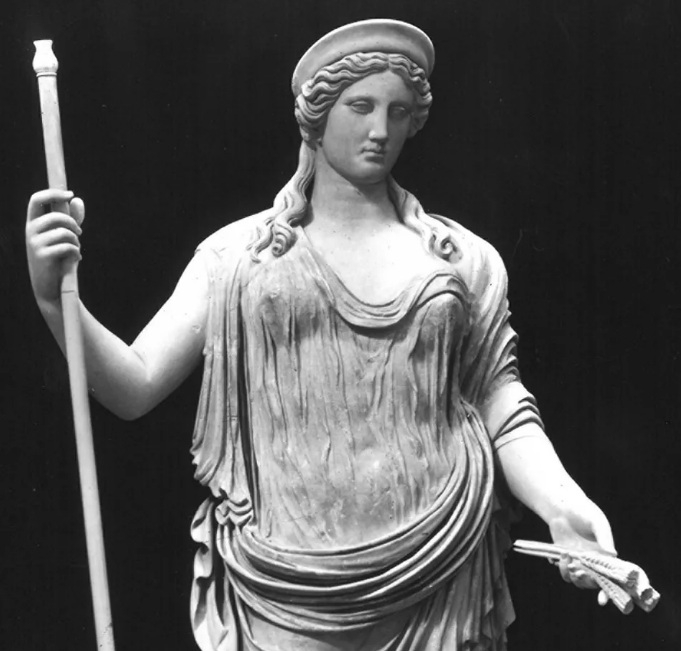Ceres

Ceres was a goddess of agriculture, grain crops, fertility, and motherly relationships in ancient Roman religion. She was the principal deity in Rome's so-called plebeian or Aventine Triad before being joined with her daughter Proserpina in what Romans dubbed "the Greek Ceres rites." Cerealia, her seven-day April festival, featured the popular Ludi Ceriales (Ceres' games). She was also venerated during the Ambarvalia festival's May Lustratio of the Fields, harvest time, and Roman marriages and funeral ceremonies. She is typically portrayed as a mature woman. Ceres is the only one of Rome's many agricultural deities to be mentioned among the Dii Consentes, Rome's equivalent to Greek mythology's Twelve Olympians. The Romans recognized her as the Greek goddess Demeter's counterpart, whose mythology was recreated for Ceres in Roman art and literature.
Ceres was credited with discovering spelt wheat (Latin far), yoking oxen and plowing, sowing, protecting, and nurturing the immature seeds, and bestowing agriculture on humanity. She possessed the ability to fertilize, increase, and fructify plant and animal seeds, and her rules and ceremonies safeguarded all agricultural pursuits. Cerealia, Ceres' biggest festival, took place from mid to late April. Her plebeian aediles planned it, and it included circus games (ludi circenses). It began with a horse race in the Circus Maximus, the starting point of which was beneath and opposite her Aventine Temple; the turning post at the further end of the Circus was consecrated to Consus, a grain storage deity. Following the race, foxes were released into the Circus, their tails ablaze with lit torches, maybe to cleanse the crops and protect them from illness and vermin, or to bring warmth and vigor to their growth. Cerealia hosted ludi scaenici (theatrical religious festivities) from April 12 to 18.
The "Temple of Ceres in the Circus Maximus" (her Aventine Temple) is described by Vitruvius (c.80 - 15 BC) as typical Araeostyle, with widely spaced supporting columns and architraves of wood rather than stone. This type of temple is clumsy, heavy roofed, low and wide, with pediments ornamented with clay or brass statues gilt in the Tuscan fashion. During the early Imperial age, soothsayers advised Pliny the Younger to rebuild an ancient, "old and narrow" Ceres shrine on his rural estate near Como. He replaced an antique wooden worship statue of the deity that was inside.













